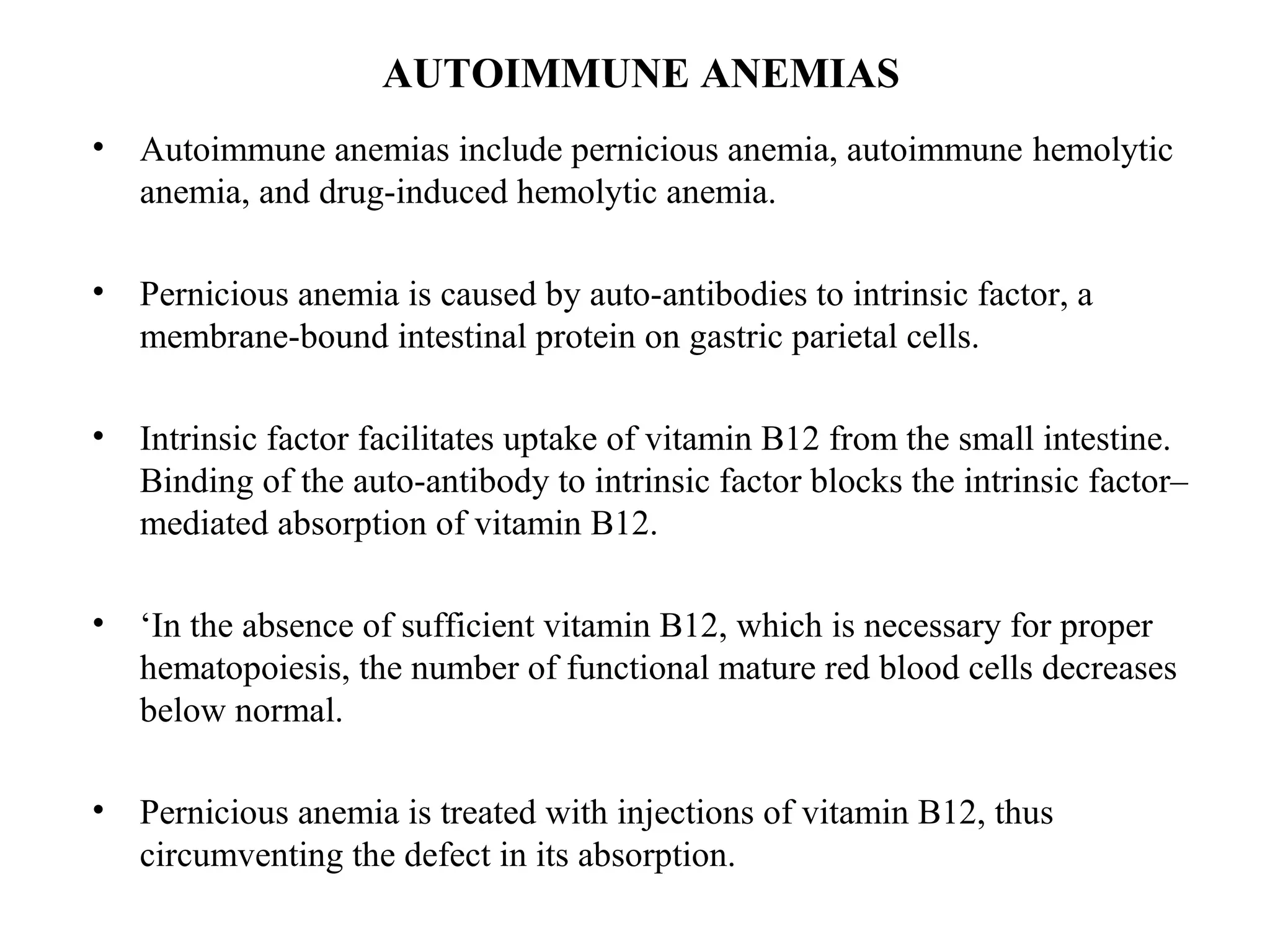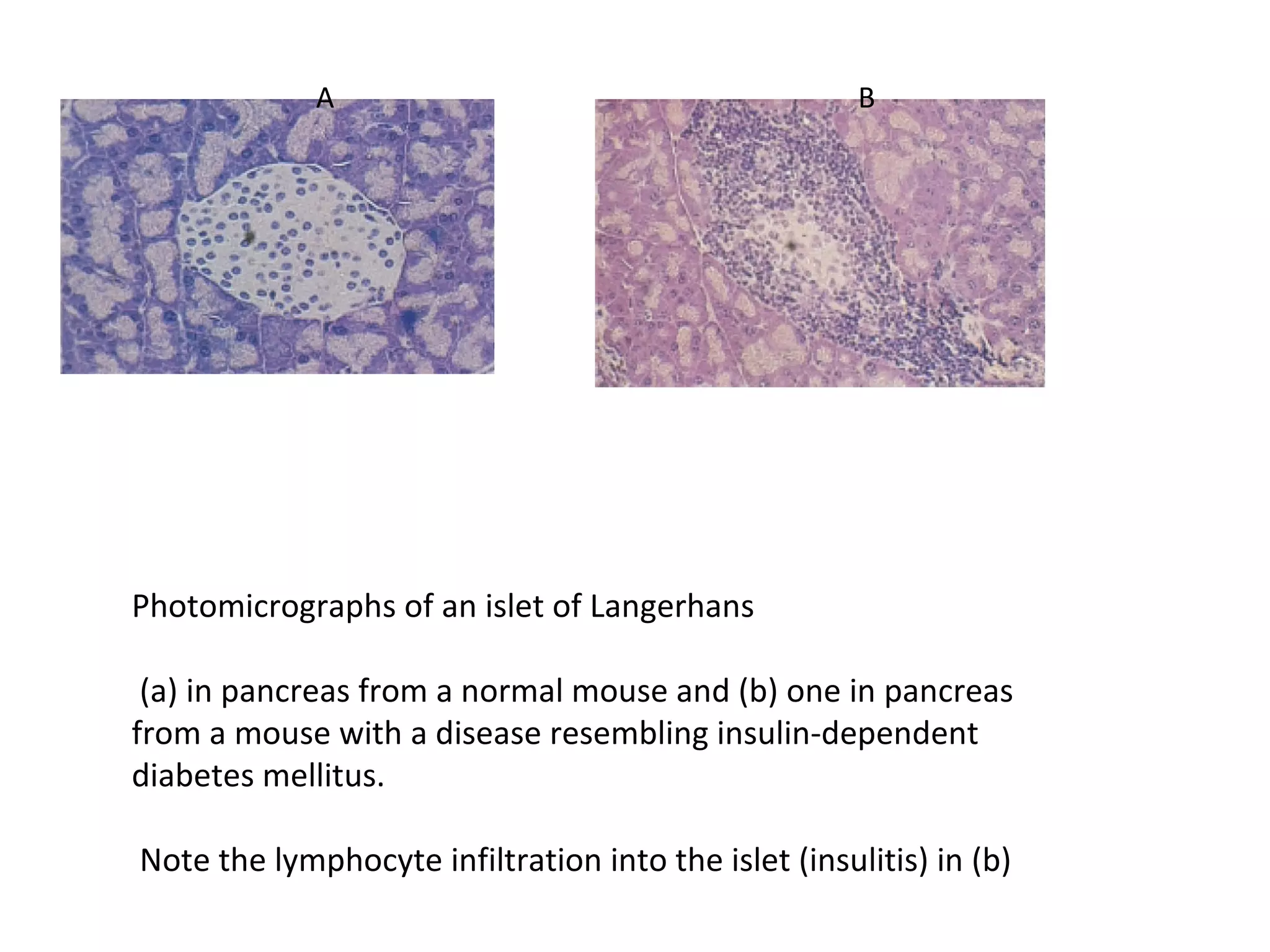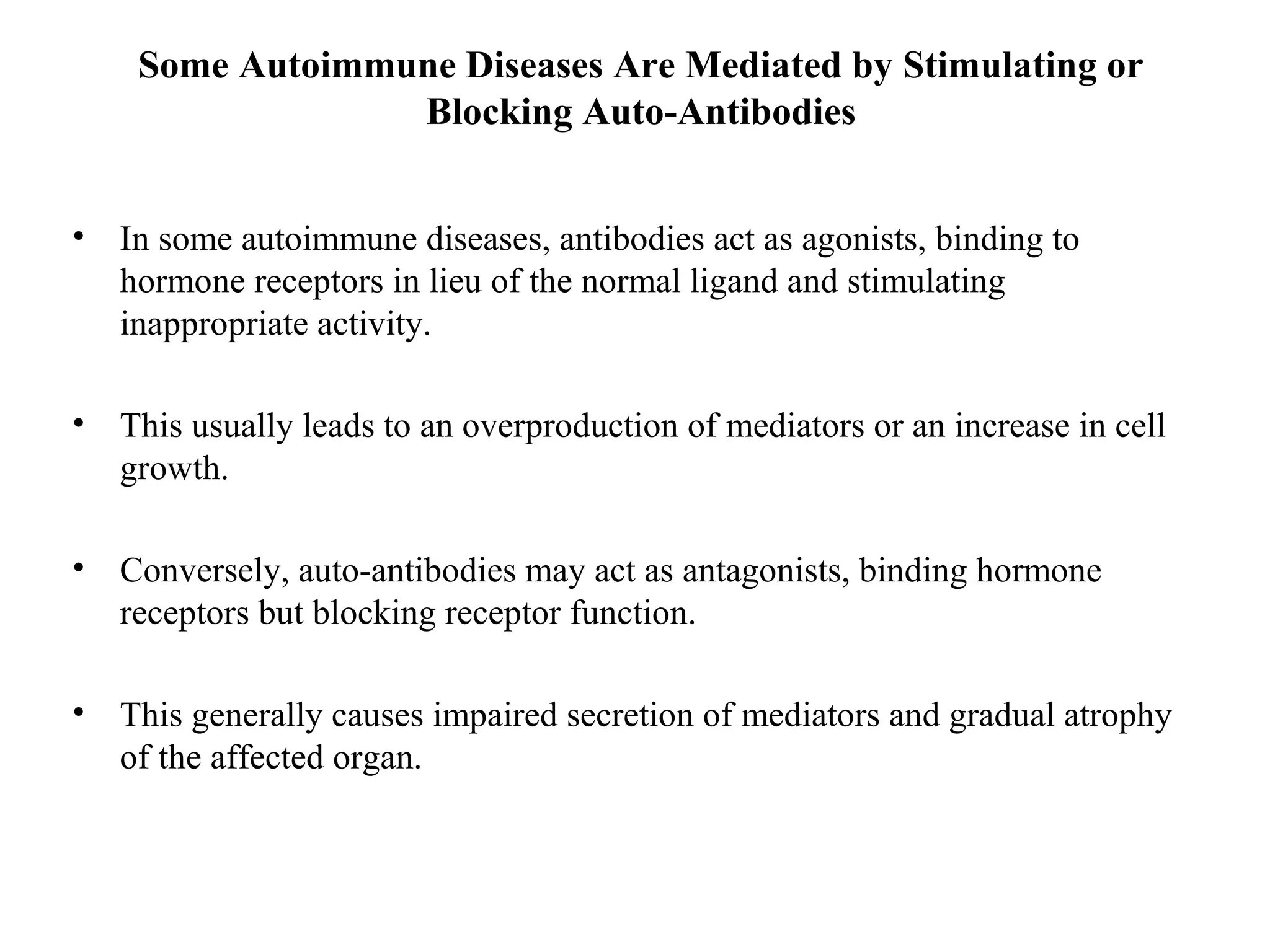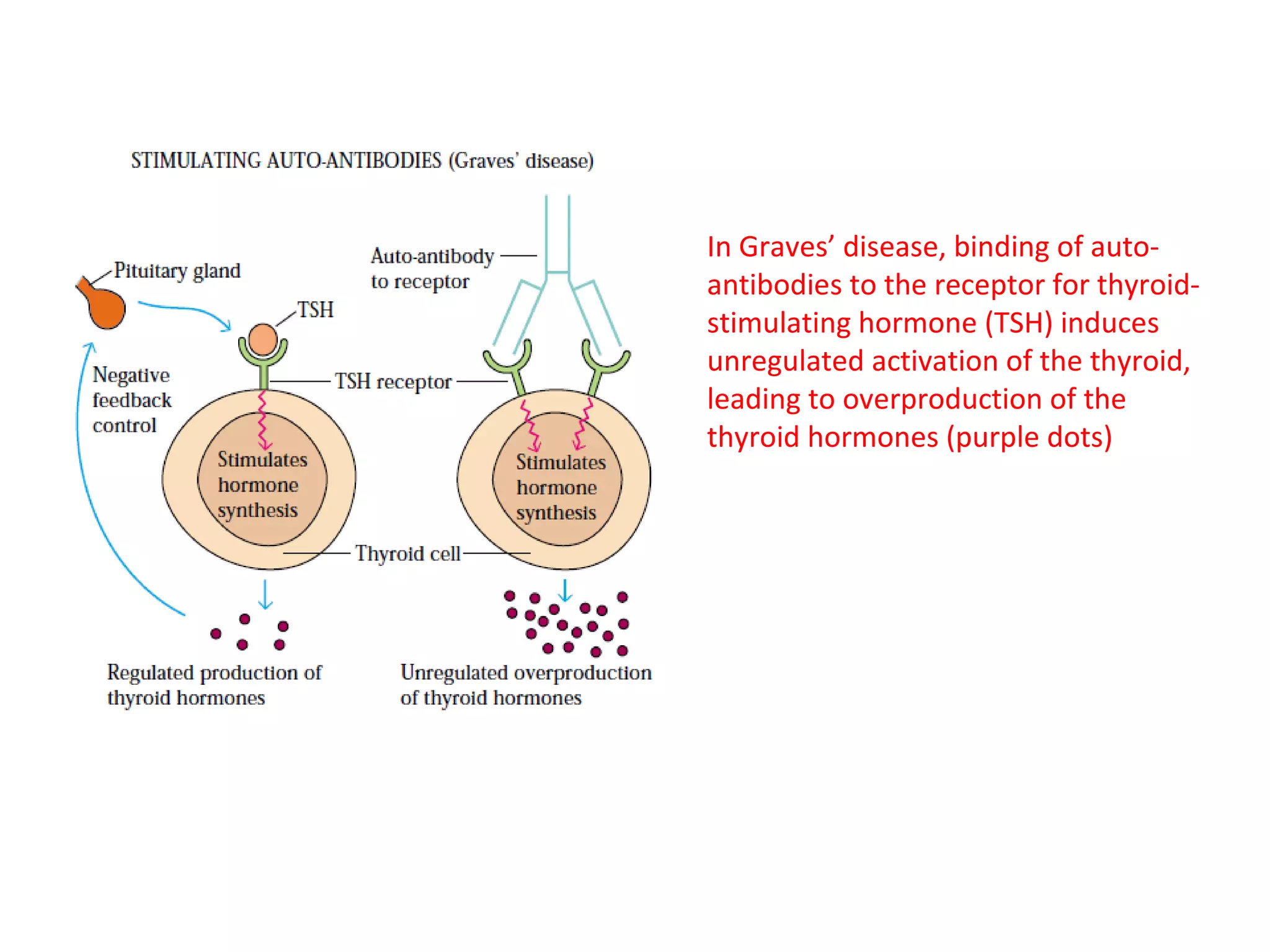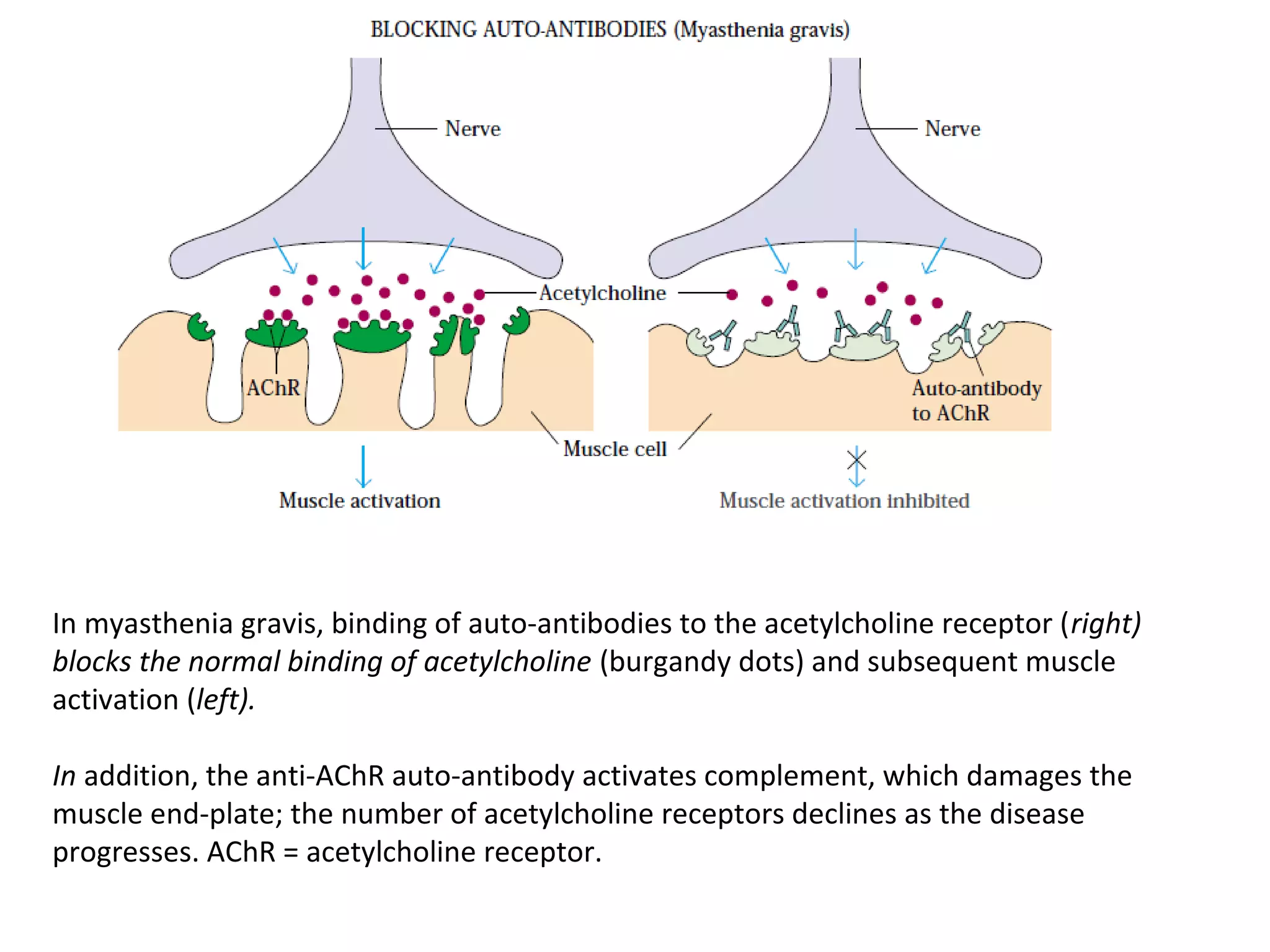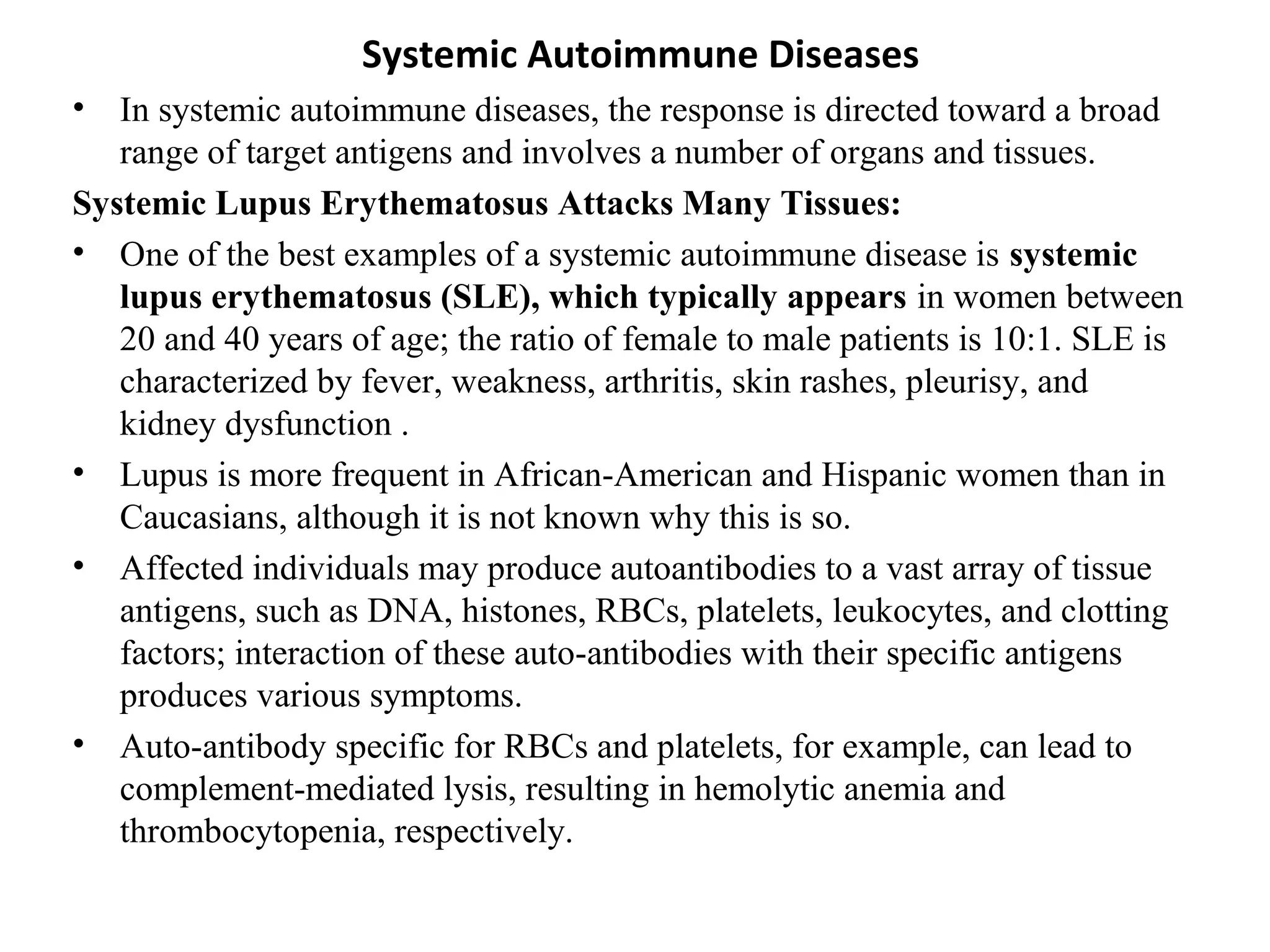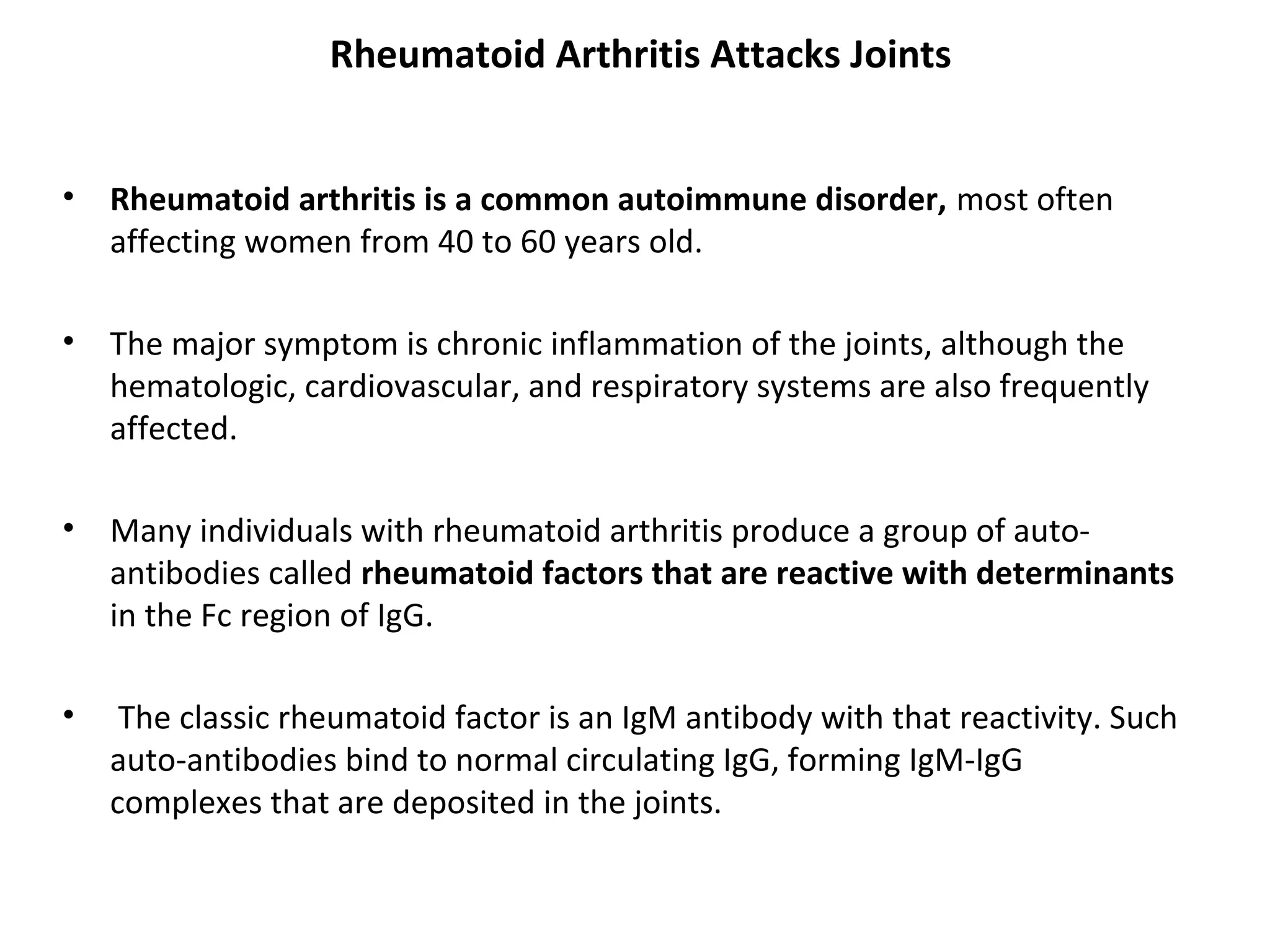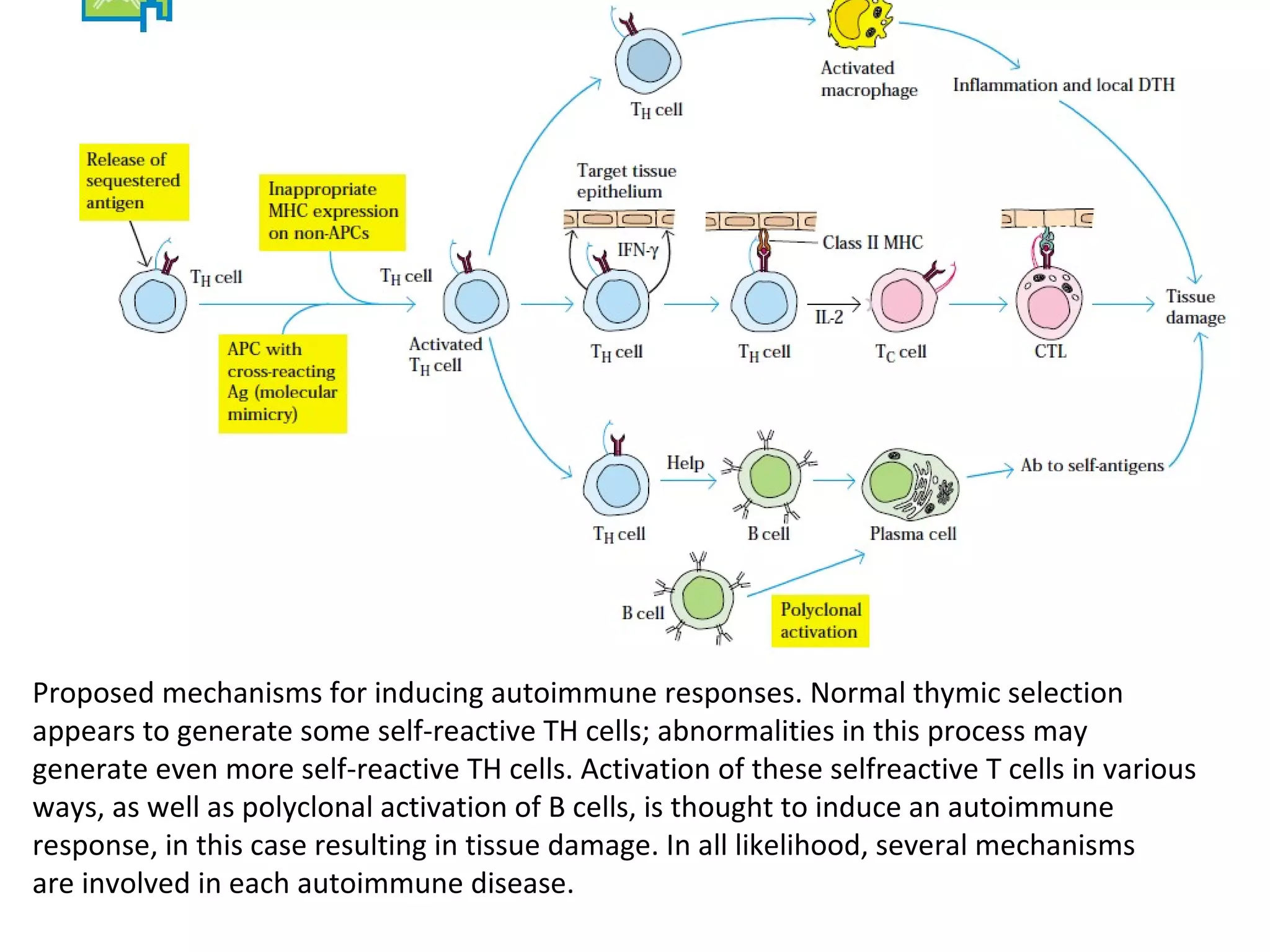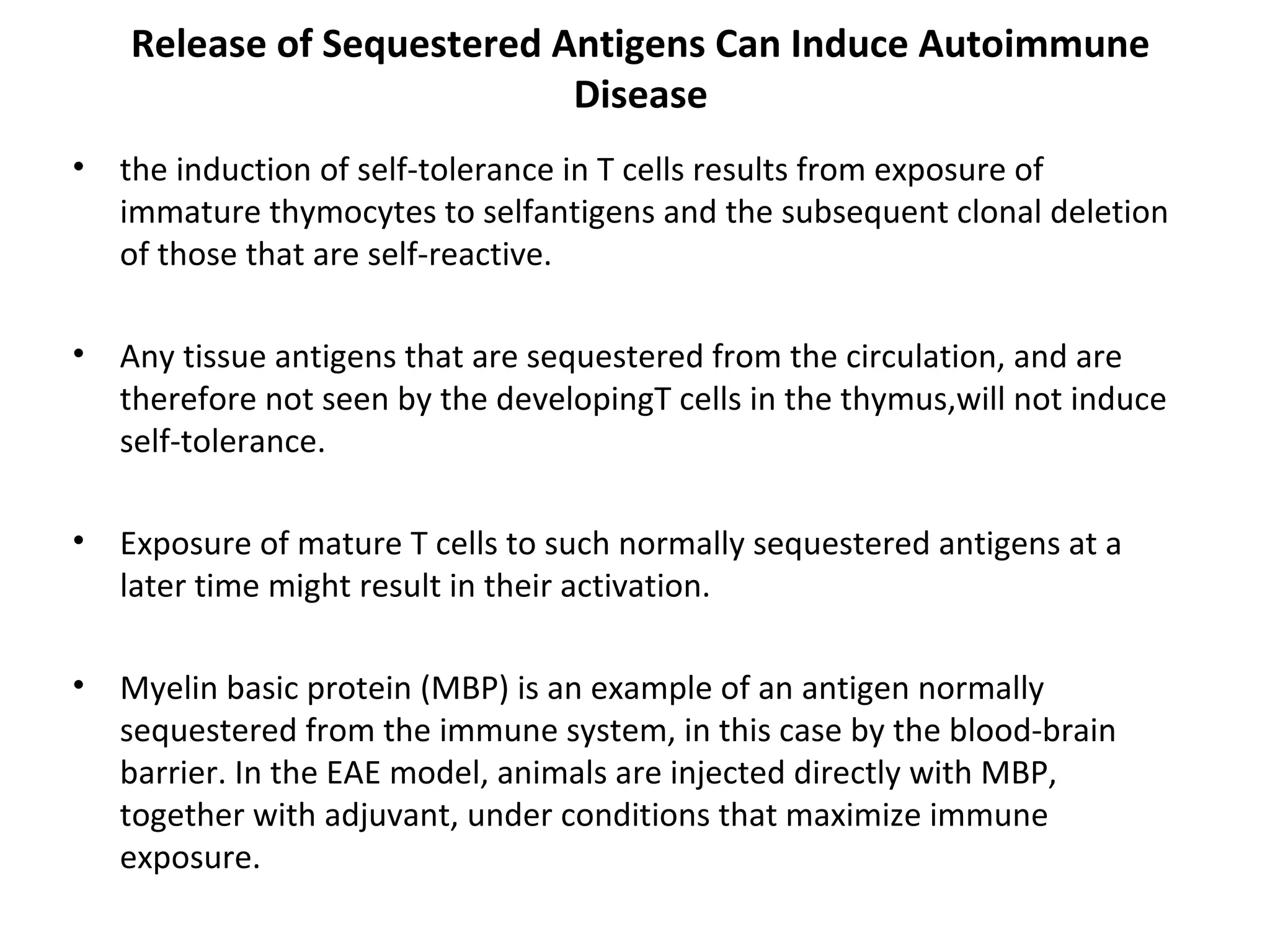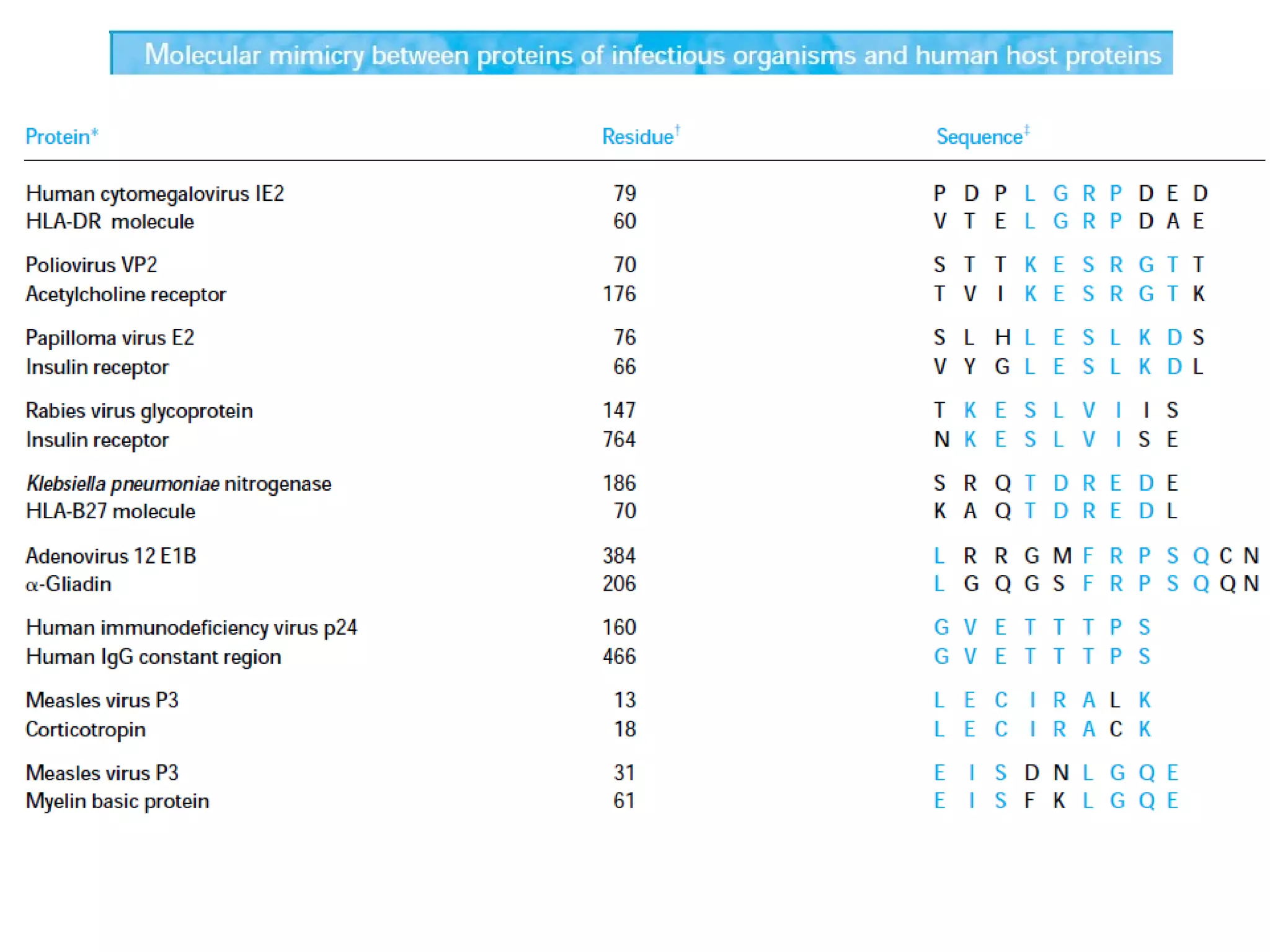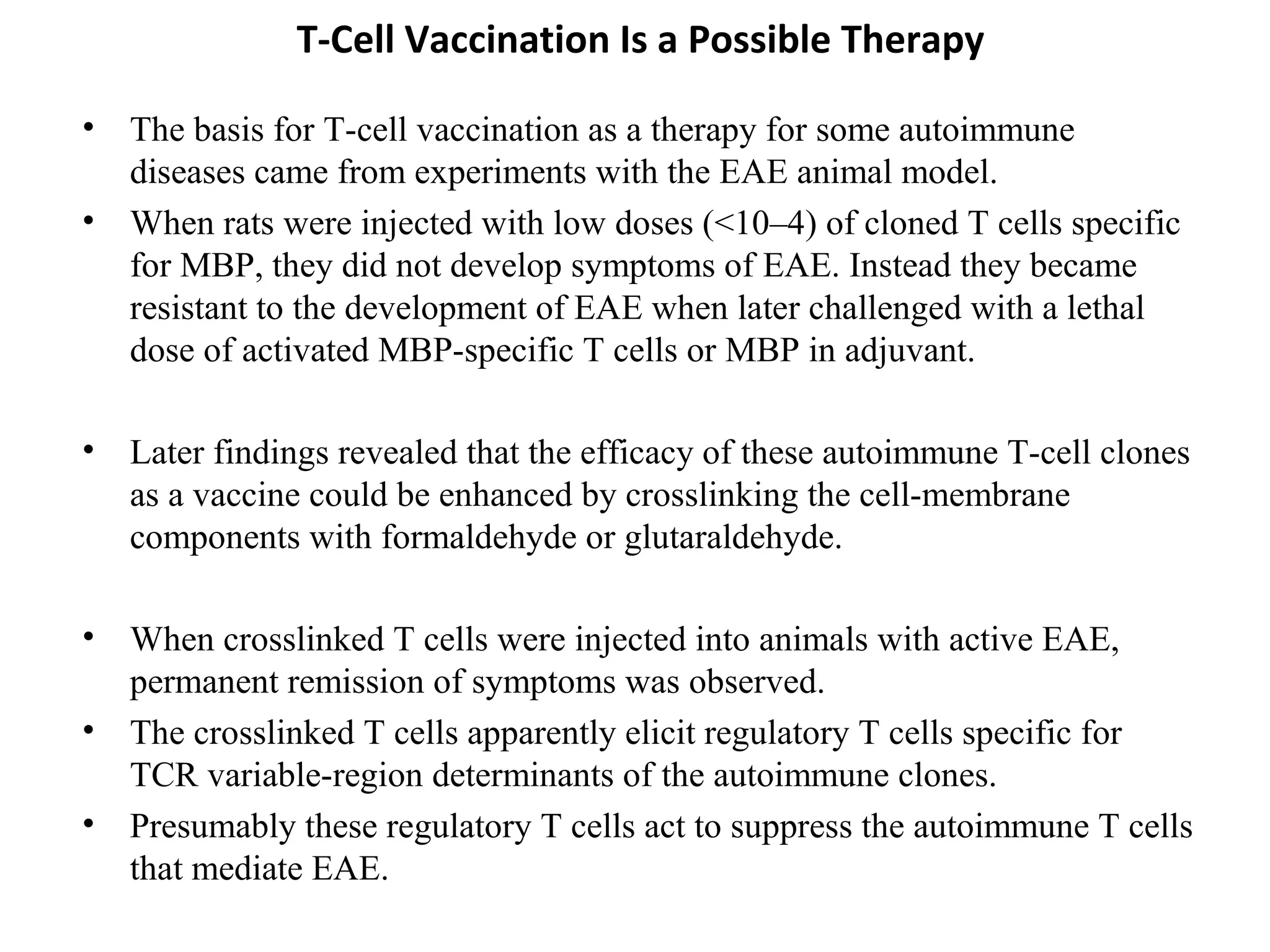This document discusses autoimmunity and autoimmune diseases. It begins by explaining how the immune system can mistakenly attack self-antigens, leading to autoimmunity. Several organ-specific and systemic autoimmune diseases are described in detail, including how they are mediated by direct cellular damage, stimulating or blocking autoantibodies. Current treatments aim to suppress the immune system generally but do not cure the underlying condition. Experimental therapies discussed include T-cell vaccination, peptide blockade of MHC molecules, and monoclonal antibodies.






